The Best Way To Train Legs Without Hurting Your Back
Hands down one of the worst things for me when I was at the peak of my lower back pain struggle was successfully training legs without hurting my back.
I tried going lighter, I took out squats, I took out all spinal loading exercises, I even tried taking leg training out all together. This sucked for obvious reasons but it was the only thing that really seemed to work.
For some of you dealing with chronic lower back pain you can cross all your T’s and dot all of your I’s when it comes to your form but what if you’re still experiencing back pain even after all these changes?
Or maybe you don’t really have any back pain, you just want to train for longevity and to stay pain free. If so, this article is for you!
Today, I want to share with you my favorite lower body exercises that are safe for sensitives backs but still build lower body strength and endurance!
A few things to consider when training legs with back pain.
Each individual is going to be a little different when it comes to what they can manage with their own low back issues. We all have our own quarks and it’s important to know your own personal boundaries and only apply to your situation what you know is safe. I also like to use the phrase
==>”Chew up the meat and spit out the bones”
So if it hurts then stop. If it causes some weird flare up while doing it, stop. Pain is something you do not push through when it comes to exercising for long-term relief.
==> If you have any plans of working your way out of chronic pain you have to understand that pain is a mental thing just as much as it is a mechanical thing.
What this means is that if your lower back keeps getting stiff after a few sets of body weight squats it may not be from doing body weight squats but that the narrative in your head is that doing squats causes pain. Therefore, whenever you do any kind of squat or squat like movement you’re already preparing for the worst.
This mental grooving that goes on triggers what I call your Protection Mechanism which is where most chronic tightness and stiffness/pain comes from. You can learn more about your “Protection Mechanism” here.
The mental side of pain is a deep but critical topic that I break down and show you how to work through inside of Relief Academy
==> It’s okay that you can’t do a certain exercise. It’s not necessarily a “loss” but room to grow and challenge as you improve.
If you read the previous version (2015) of this article I referred back to this belief that I would never be able to squat again BUT that I was okay with that. My tone seemed depressed but I was also breaking into this “refreshing” season of my life with the strides I had made with back pain that I was becoming okay with what I had accomplished to that day.
Fast forward 4+ years and guess what I can do squats if I wanted to but I don’t see the point for my personal goals. Yes, the squat is a GREAT exercise but why do you feel you need to load the spine in order to gain strength in the lower body?
Is it because that’s what you see in magazines, your local gym or hear from your trainer?
Understand something, your future longevity is in your hands and is entirely up to you. If you know a certain exercise just does not agree with your body then guess what!?
Don’t do it. There is always another way! Your body and back will thank you for it later.
What are the best ways to train your legs with lower back pain?
1) Train one leg at a time.
Essentially you are just cutting the weight in half and training one leg at a time instead of both. This is a great strategy for a number of reasons:
==> Less weight on the body: If you were to go from double leg presses to single leg presses your removing more then half of the weight off of the lower body. This is going to free up strain on the lower back but still be enough resistance for the leg muscles to be challenged. When you’re training two legs you need more weight to get the right level of challenge for the muscle fibers.
==> Less risk of injury or over compensations. Training one leg at a time allows me to focus less on dying from this bar crushing me if my legs give out and more on the exercise and leg I am working. You feel safer and in more control and for anyone dealing with chronic back pain this is critical to staying pain-free. With less weight and less “full body” characteristics you have to deal with you can really make sure you are hitting the leg with more attention and the right amount of resistance.
2) Experiment With Lunge Variations.
So there are lots of great lunge variations and I will share with you some of my favorites below.
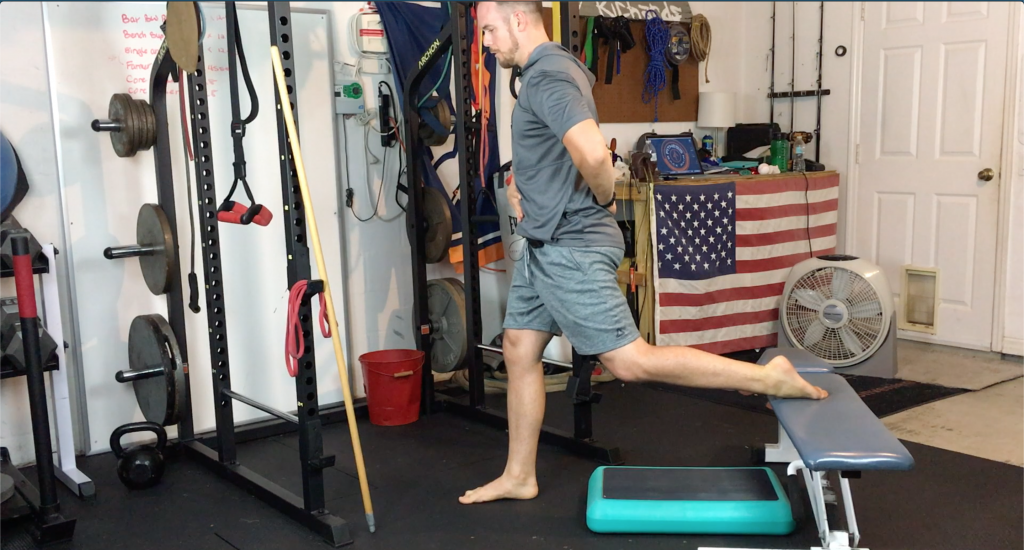
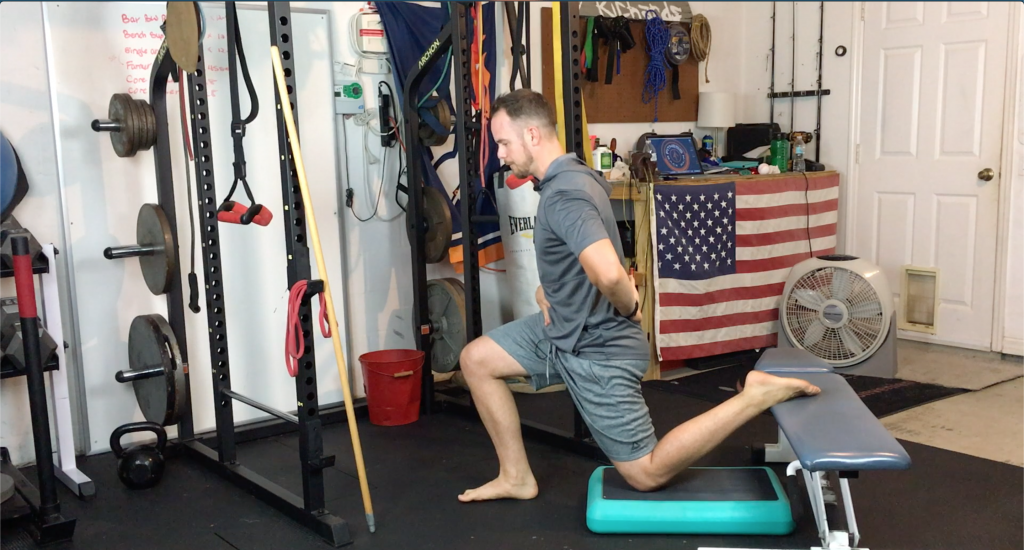
Rear Foot Elevated Lunge:
I have a love hate relationship with this exercise. World renown back pain specialist Dr. Stuart McGill says that these can cause low back and si joint pain. From further research I have also found positive influencers in the fitness industry supporting the opposite. For example of this you can check out Michael Boyles short article on his experience with using rear foot elevated lunges on his clients.
My personal experience working with this exercise has lead me to a few observations:
Those who experience pain with this exercise typically have their rear foot on too high of a box or bench behind them. When they go down they have to extend the lower back, putting potential compression forces on an irritated area. This makes sense that you would have pain when doing these! To fix this, what I do is place a Yoga block or cardio step under the back knee so when you go down to do the lunge the knee will be stopped by the yoga block or step.
The other issue I see are those with tight Quad muscles and or lacking in knee flexion when going back into the lunge. They try to keep that back leg too straight which again forces you into an over extended position in the lumbar spine. To fix this drive that back knee down and back aiming to keep the front knee behind or over top of the front toes.
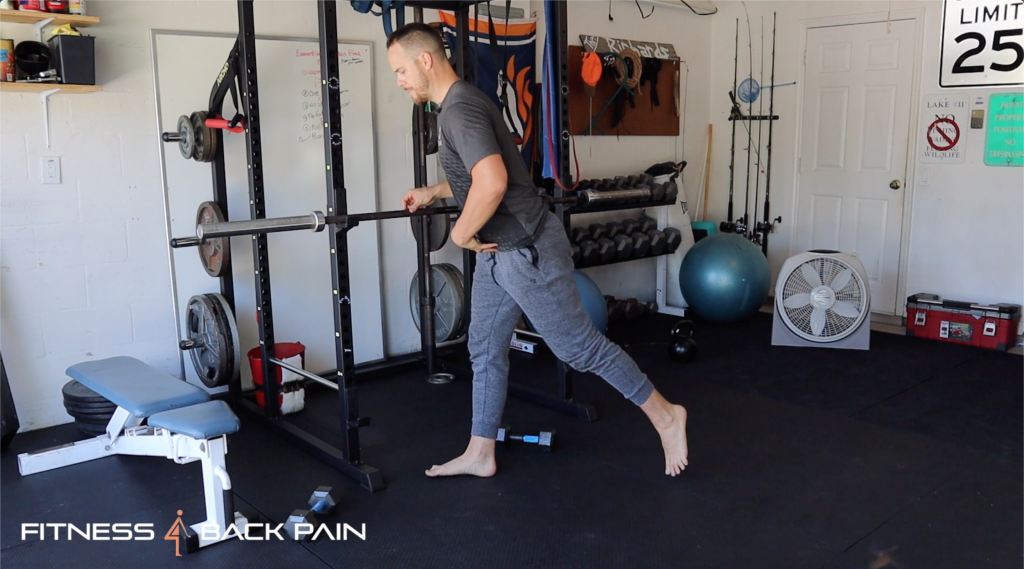
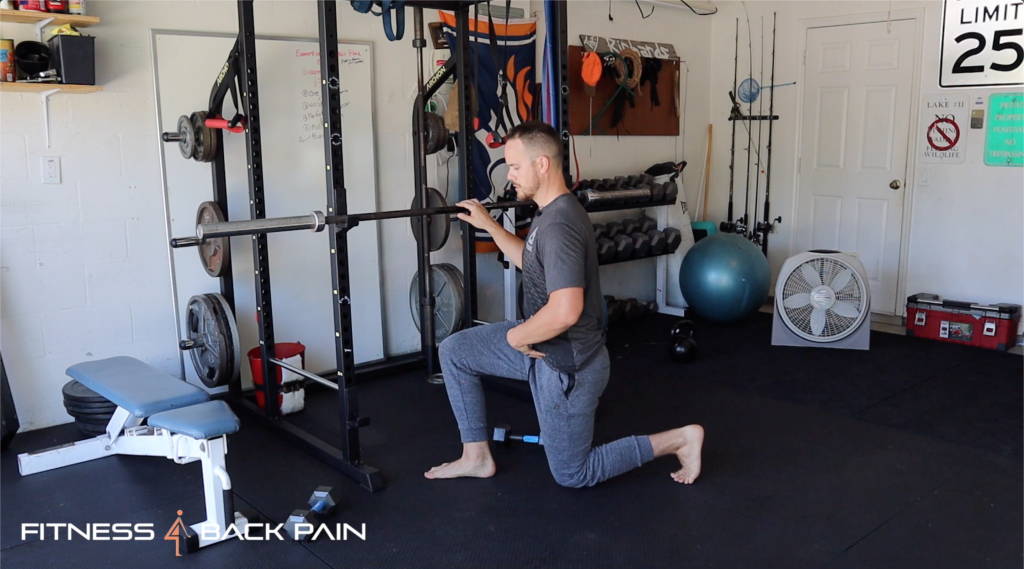
Step Back or Reverse Lunges:
I always suggest you do lunges stepping back instead of forward. They can be step back lunges or stationary whichever you prefer. The big difference you will notice is the impact it has on your knees and lower back.
For those with sensitive lower backs I like coaching the reverse lunge because I can keep the client hinged forward slightly when stepping back to keep them from over extending in the bottom position. With the forward lunge they tend to get too much extension in the lumbar spine trying to stay upright as they step forward.
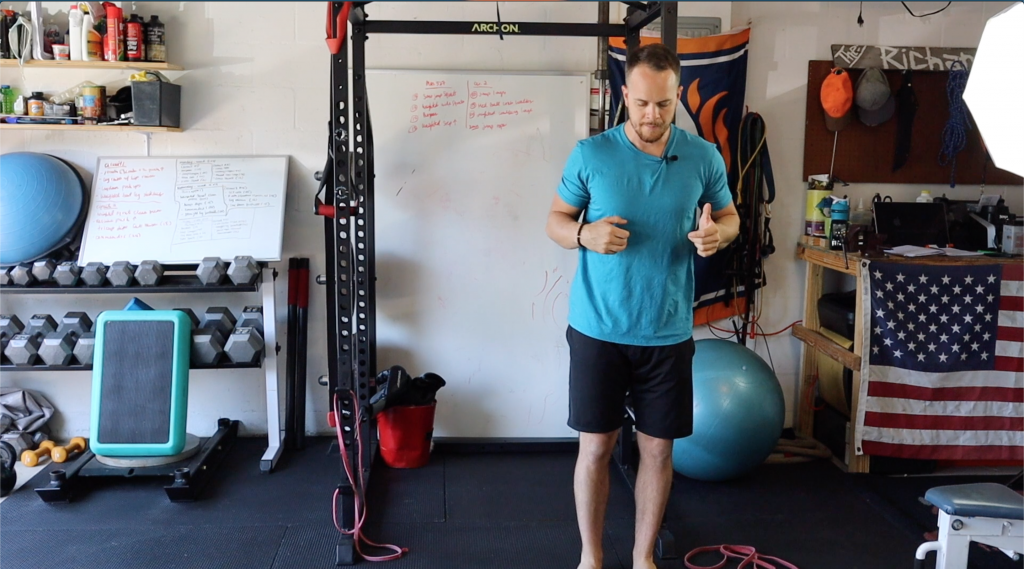
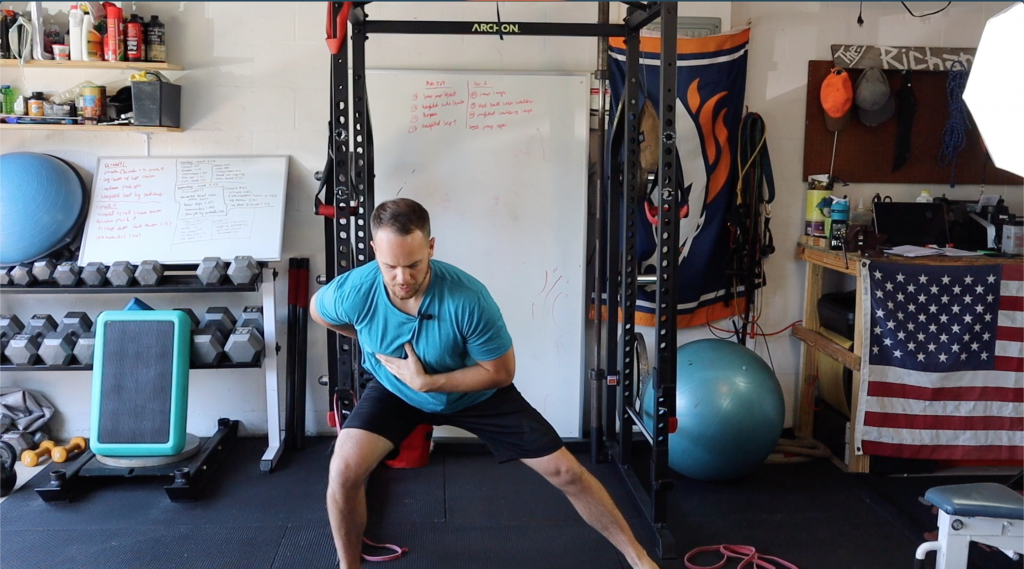
Side Step Lunge:
This is another great lunge variations that can be gentle on the low back if done correctly. A few key things you want to look at:
==> Make sure you are hinging back and loading the glute not the knee of the side you are leaning towards. This takes practice but is critical!
==> As you hinge back make sure your spine stays neutral. What tends to happen is due to weakness in the leg you over extend your lower back which gives you the illusion of going lower but you’re actually just causing unnecessary compression in the lumbar spine which for you is probably already irritated!
Step to the side, load that hip with the weight and hinge back. Keep your core on and lower back relaxed and neutral.
3) Alternative Squat Variations
Well Squats:
The well squat or hang squat is a great way to load the legs without loading the spine. This exercise allows you to challenge the lower body without having to go to heavy with weight. If done right the weight should feel balanced as it hangs and you go through the movement.
Keep your knee angle around 90 degrees. No real reason you should be going past that with this exercise. Be mindful of your neutral spine and NOT over extending the lower back at the bottom.
Goblet Squats:
This is a great exercise to bang out after a solid round of core training. Side Note: If you follow the training rules on this site than your core training is done FIRST. There are a lot of reasons for this so refer to this video if you want to be refreshed on that!
I say these are best done after a core routine because your trunk is already primed for this type of exercise. Having the weight shift to the front does give it a dynamic effect that does not agree with everyone. What usually helps those who have a hard time doing this is strategic core exercises being done before hand. The core needs to be on to keep the spine neutral without breaking into extension or rounding from the load being out front.
Skater Squat:
The skater squat is a great exercise to do if you’re dealing with lower back sensitivity. I added another video you can watch above but if you watch the first video in this article I give you a few more alternatives you can work through if the bodyweight version of the skater squat does not work for you!
That’s it! My go to leg exercises to a pain-free workout! Always remember to make sure you are cleared to exercise before you are attempting anything you see. These exercise are for those who have been cleared to return to normal activity!
What is your favorite single leg exercise? If it’s not in this list share it below in the comment section!
William
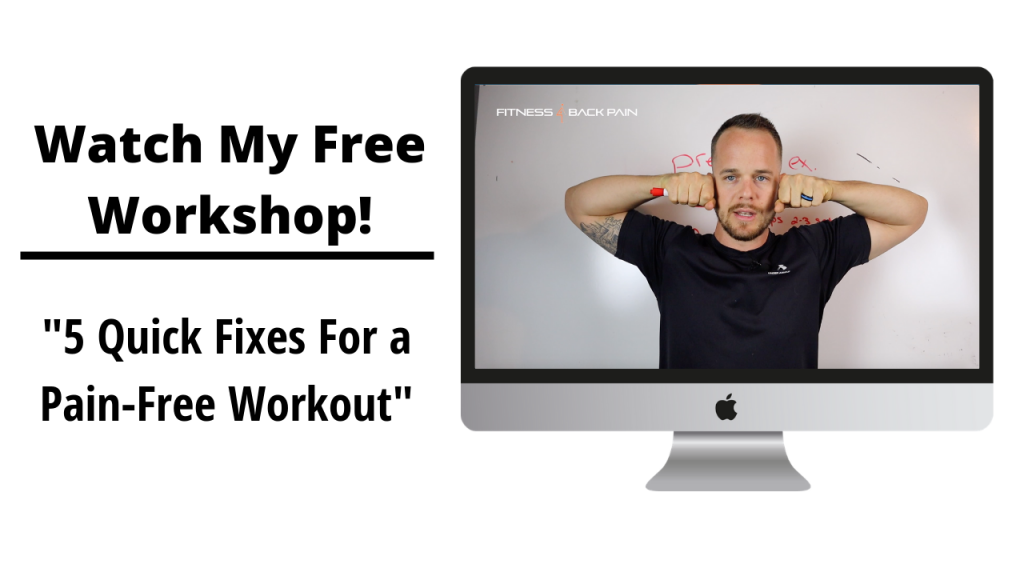


2 thoughts on “The Best Way To Train Your Legs Without Hurting Your Back”
Comments are closed.